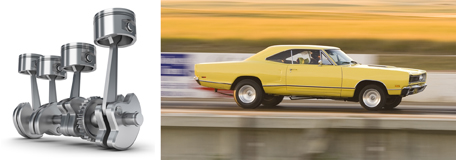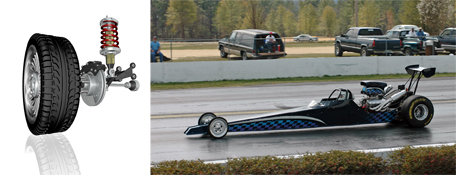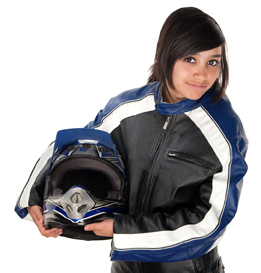
pistons: © Alexandr Mitiuc/27283166/Fotolia; car: © Sly/388936/Fotolia
Racing a car includes many repetitive and some non-repetitive aspects to which trigonometry can be applied. In the first part of Module 5 you will explore how problems can be modelled and solved using sine, cosine, and tangent functions. In the second part you will begin to develop a set of tools that are useful in more advanced mathematics, and you will explore how you can determine whether these tools work properly.

tire: © nali/15258043/Fotolia; dragster: © Robert Young/2721726/Fotolia
In this module you will investigate the following questions:
- How can trigonometry be used to model and solve problems involving motion?
- What are the uses and limitations of a trigonometric identity?
To investigate the module questions, you will focus on the lessons and questions listed in the following table.
Lesson |
Topic |
Lesson Questions |
1 |
The Tangent Function |
How can the tangent function be represented graphically? |
How can the tangent function be used to solve problems? |
||
2 |
Equations and Graphs of Trigonometric Functions |
How can a problem be solved using a trigonometric model? |
3 |
Trigonometric Identities |
How can you determine whether or not an expression is a trigonometric identity? |
How can trigonometric identities be used to simplify problems? |
||
4 |
Using Identities to Solve Equations |
How can trigonometric identities be used to solve problems? |
5 |
Proving Trigonometric Identities |
How can a trigonometric identity be proven? |
Why is it necessary to prove an identity? |

© Scott Griessel/29491362/Fotolia
The Module 5 Project: Pushing the Limits of Vehicle Performance will focus on how trigonometry can be used to determine various distances at a drag race and what speed and angle are required to allow a vehicle to jump over a large obstacle. You will complete the Module 5 Project as you work through the lessons.
Note: Loading times for video and other media may vary depending on your Internet connection. Please be patient.